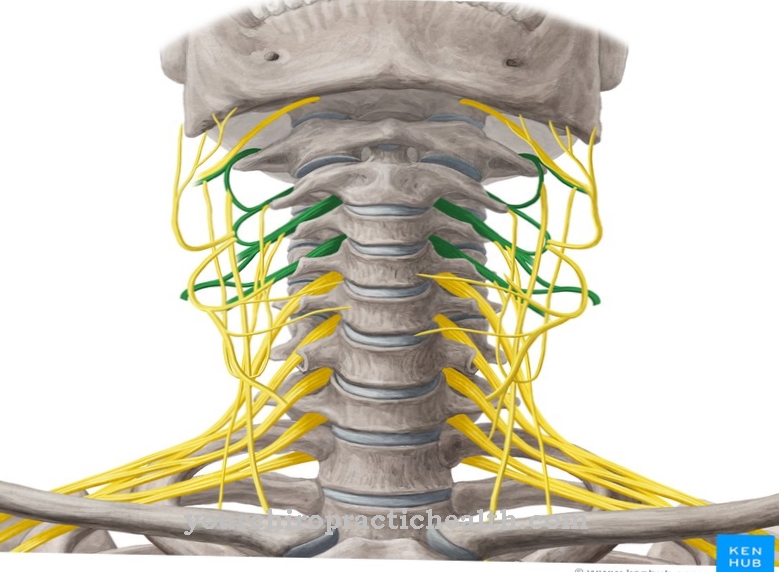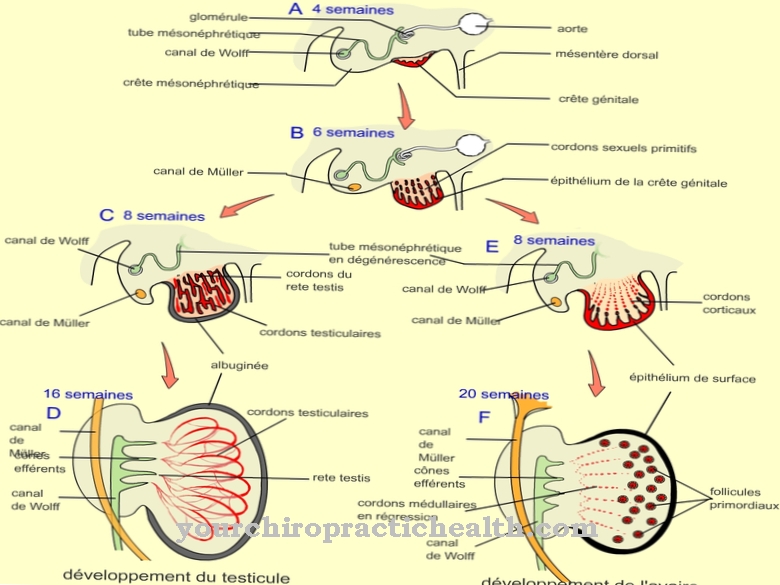Of the Allocortex is part of the human brain. It is assigned to the cerebral cortex and is part of the central nervous system.
What is the Allocortex?
The allocortex comprises the regions in the human brain that form three to five layers. It forms about 10% of the cerebral cortex, which is called the cerebral cortex. Opposite it is the six-layer neo- or isocortex, which takes up 90% of the cerebral cortex.
The allocortex is made up of the archicortex and the paleocortex. The archicortex consists of the limbic system. The hippocampus is assigned to this. The olfactory organ of the human organism belongs to the paleocortex. The Allocortex thus takes on important functions in emotional processing, learning and processing of smells. In addition, the mesocortex, the transition between the isocortex and the archicortex, is counted as part of the allocortex.
In adulthood, the mesocortex consists of the para-hippocompal cortex and the cingulate gyrus. While the para-hippocompal cortex is assigned to the allocortex, the cingulate gyrus is part of the isocortex. The allocortex consists to a large extent of pyramidal cells. These serve to transmit the stimuli received by a sensory organ to the cortex. In tribal history, the allocortex belongs to the older region in the human brain.
Anatomy & structure
The archicortex describes the limbic system. It includes the hippocampus, the parahippocompalis gyrus, the amygdala and the mammillary corpus. Even if the cingulate gyrus is part of the archicortex, it is not assigned to the allocortex.
The paleocortex unites different centers of the human brain. These include the bulb and the olfactory tract, the olfactory tubercle, the septum, the prepiriform cortex and parts of the amygdala, the amygdala. The structures of the palaeocortex form the olfactory brain with the olfactory bulb. This has the shape of a butterfly antenna. The stimuli received are passed on directly to the cerebral cortex via the olfactory epithelium without switching in the thalamus. The olfactory brain is called the olfactory cortex. This is where the processing of odors takes place. The allocortex consists of three layers.
These are the lamina molecularis, the lamina pyramidales and the lamina multifromis. The first layer is called the stratum molecularulare and contains the upper dendrites of the pyramidal cells. The middle layer is formed by the stratum pyramidale and consists of the cell bodies of the pyramidal cells. The third layer contains the lower dendrites of the pyramidal cells and is called the stratum oriens.
Function & tasks
The allocortex is essentially made up of the hippocampus and the olfactory organ. The paleocortex, also known as the olfactory cortex, evaluates all information that is received via the olfactory epithelium and that reaches it via the olfactory tract.
Humans can distinguish 5,000 smells. These are absorbed in over 10 million olfactory cells and forwarded for processing. Smell cells have a lifespan of a few weeks. Then they die and are replaced by new ones. This in a task that is taken over by the Allocortex. The olfactory cells are the only nerve cells in the adult nervous system that divide mitotically. In mitosis, a cell nucleus divides, producing two daughter nuclei that have the same genetic information.
The functions of emotional processing, learning and memory formation take place in the archicortex. Long-term potentiation and thus memory consolidation takes place in the layers of the archicortex. Long-term potentiation transfers recorded information from short-term memory to long-term memory. These include memories, knowledge of courses of action or conditioning processes. Human habits as well as unconscious processes are taken over in the archicortex. In addition, the experience of emotions takes place in the limbic system and above all the amygdala.
Fear, lust, joy or grief arise there. The emotions can take place briefly or turn into long-lasting emotional phases. Positive as well as negative emotions, moods and affect regulation find their origin here. The Allocortex thus takes on an important social function and regulates feelings. The awareness of an emotion that has arisen is defined as a feeling. Parts of learning and evolutionary elements such as the fear response flow into this process.
You can find your medication here
➔ Medicines against memory disorders and forgetfulnessDiseases
Lesions in the allocortex result in impairment of odor processing as well as memory and the formation of emotions. The smell plays an important role in the partnership search.
The partnership attraction or sympathy is related to the histocompatibility antigens of the human organism. Partners whose genetic structure is too similar are perceived as repulsive. The evolutionary goal behind this is to prevent genetic dispositions in the offspring and to produce offspring that have a strong immune system. The process of odor processing is changed in the event of lesions or impairments caused by drugs. In addition, a restricted sense of smell affects the sense of taste.
Alexithymia is a condition known as emotional blindness. This condition includes symptoms that describe an inability or limitation to recognize emotions. Own feelings can only be perceived insufficiently or not at all. Empathy is also not felt. A special feature of this illness is that the people close to you suffer more from the illness than the person affected.
Alcoholism affects the functioning of the pyramidal cells. This means that memories are lost and can no longer be replaced. If Korsakoff's syndrome occurs due to alcohol abuse, existing gaps in memory are replaced by confabulation. Memory errors are replaced by fictitious narratives.



























